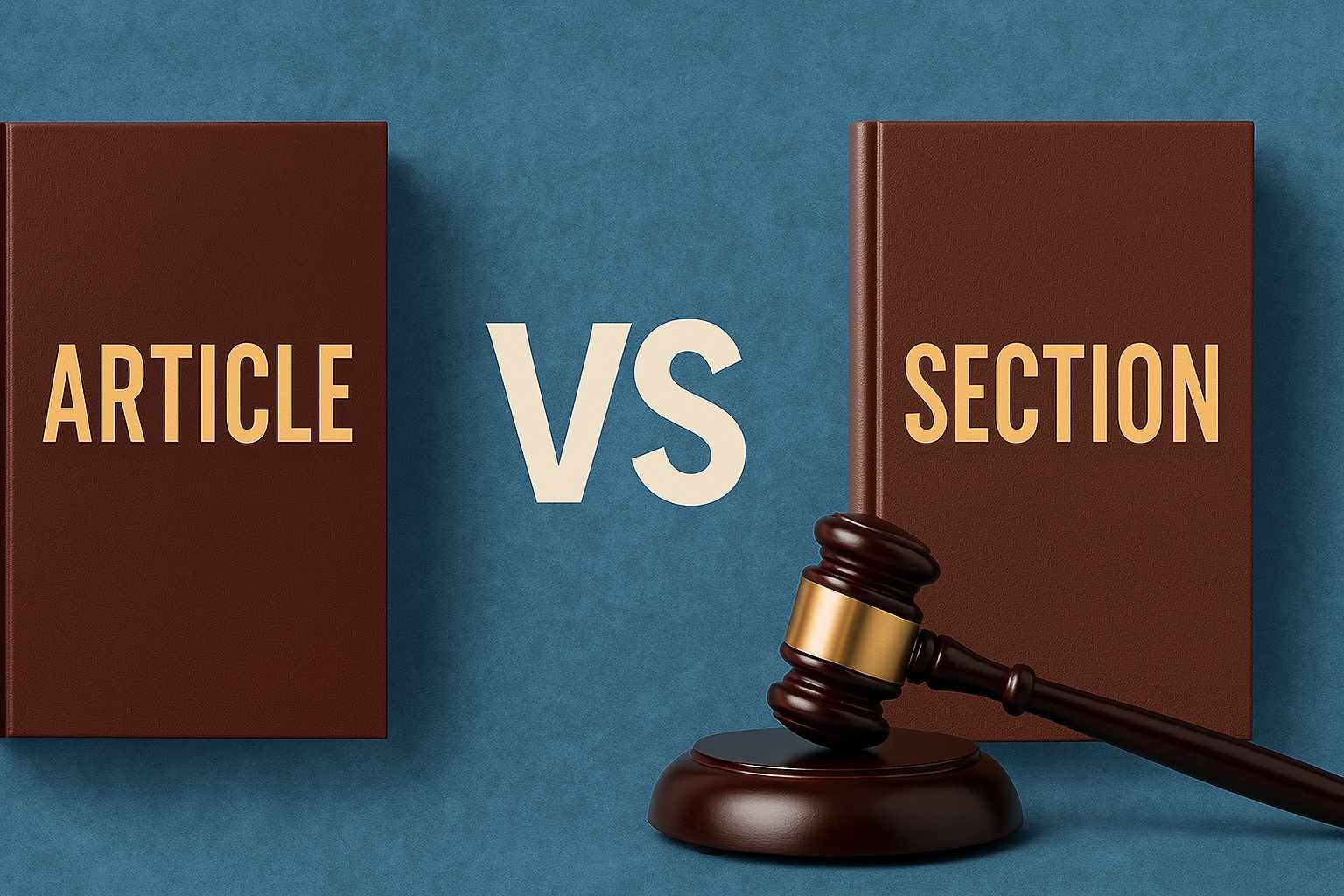On this page you will read detailed information about Protest Petition.
As an Indian citizen, you may find yourself in a situation where you need to challenge a police report or investigation. In such cases, a protest petition can be a powerful legal tool at your disposal. This formal document allows you to voice your objections and present additional evidence to the court. Understanding the intricacies of a protest petition is crucial if you wish to effectively contest the findings of law enforcement agencies. In this article, you will discover the key aspects of protest petitions in India, including their purpose, legal basis, and the proper procedures for filing one. Armed with this knowledge, you can better navigate the complexities of the Indian legal system.
What is a Protest Petition?
A Protest Petition in India is a powerful legal tool that allows complainants to challenge the final report submitted by the police in a criminal case. This mechanism serves as a crucial check and balance within the Indian criminal justice system, ensuring that victims have a voice even after the investigating agency has concluded its work.
Legal Basis and Procedure
While not explicitly defined in the Criminal Procedure Code (CrPC), the concept of a Protest Petition has evolved through judicial interpretations. It is rooted in various sections of the CrPC, including Sections 173(2), 190, 200, and 202. These provisions grant the Magistrate the authority to review police reports and take further action if necessary.
When filing a Protest Petition in India, the complainant can request the Magistrate to:
- Reject the final police report
- Order further investigation
- Take direct cognizance of the offence
Significance in the Justice System
The Protest Petition mechanism aligns with the principles of natural justice, allowing aggrieved parties to question the credibility of police reports and seek further investigation if required. It serves as a safeguard against hasty closures or insufficient investigations, promoting a victim-centric approach to justice.
The importance of a Protest Petition extends beyond individual cases. It contributes to building public confidence in the justice system by demonstrating its responsiveness to the concerns of individuals affected by crime. Moreover, it acts as a mechanism for judicial review, ensuring independent scrutiny of the investigating agency’s findings.
When Can a Protest Petition be Filed in India?
Understanding the Filing Process
A protest petition in India can be filed when a complainant or victim is dissatisfied with the final report submitted by the police under Section 173(2) of the Criminal Procedure Code (CrPC). This legal remedy allows individuals to challenge police investigations they believe to be biased, incomplete, or unsatisfactory. According to legal experts, a protest petition serves as an effective mechanism for aggrieved parties to seek further investigation or court supervision in cases where they feel justice has not been served.
Timing and Circumstances
The opportunity to file a protest petition typically arises after the police have concluded their investigation and submitted a closure report to the magistrate. At this stage, the complainant has the right to object to the police’s findings and request further action. It’s important to note that while the CrPC does not explicitly define protest petitions, their use has evolved through judicial interpretations over time.
Legal Basis and Magistrate’s Discretion
The legal foundation for protest petitions in India stems from various sections of the CrPC, including Sections 173(2), 190, 200, and 202. These provisions grant the magistrate the authority to review police reports and take appropriate action. When a protest petition is filed, the magistrate has three options:
- Accept the police report and dismiss the case
- Reject the report and take cognizance of the offense
- Order further investigation into the matter
This discretionary power allows the magistrate to ensure that justice is served and that all aspects of the case are thoroughly examined before a final decision is made.
In the previous post, we had shared information about Nyaya Panchayat: India’s Village Justice System, so read that post also.
Who Can File a Protest Petition in India?
In India, the right to file a protest petition is an important legal recourse available to complainants and victims who are dissatisfied with the outcome of a police investigation. While not explicitly defined in the Criminal Procedure Code (CrPC), this mechanism has evolved through judicial interpretations and is now considered an integral part of the criminal justice system.
Eligible Parties
The following parties can file a protest petition in India:
- Complainants: The original person who filed the First Information Report (FIR) or complaint with the police.
- Victims: Individuals directly affected by the alleged crime.
- Aggrieved Parties: Those who have suffered loss or injury due to the alleged offense.
Circumstances for Filing
A protest petition in India can be filed when:
- The police submit a closure report stating no offense has been committed.
- The complainant believes the investigation was biased or incomplete.
- New evidence has come to light that was not considered in the original investigation.
Legal Standing
It’s important to note that while anyone can file a protest petition, the magistrate has the discretion to accept or reject it. The petition must provide substantial grounds for challenging the police report and may need to meet the requirements of a formal complaint.
This legal mechanism aligns with the principles of natural justice, allowing aggrieved parties to question the credibility of police reports and seek further investigation if required. It serves as a crucial check in the investigative process, promoting a victim-centric approach and ensuring that the voices of those affected by crime are heard in the pursuit of justice.
Process for Filing a Protest Petition in India
Understanding the Procedure
Filing a protest petition in India is a crucial legal remedy for complainants dissatisfied with police investigations. The process begins when the police submit a closure report under Section 173(2) of the Criminal Procedure Code (CrPC). As per legal experts, although not explicitly defined in the CrPC, the protest petition allows complainants to challenge this report and seek further action.
Steps to File a Protest Petition
- Review the police closure report carefully
- Draft a comprehensive protest petition outlining objections
- Submit the petition to the magistrate within the stipulated time frame
- Attend any hearings scheduled by the court
According to legal resources, upon receiving a protest petition, the magistrate has several options. They may accept the closure report and drop proceedings, disagree with the report and take cognizance of the offense, or direct further investigation under Section 156(3) of the CrPC.
Potential Outcomes and Considerations
The outcome of a protest petition can vary significantly. In some cases, the magistrate may treat the protest petition as a fresh complaint, initiating proceedings under Sections 200 and 202 of the CrPC. However, it’s important to note that the Supreme Court has emphasized the need for strong and cogent evidence before summoning an accused based on a protest petition.
Legal experts stress that while protest petitions serve as a crucial check in the investigative process, their use should be judicious. The lack of codified law regarding protest petitions in India has led to some ambiguity in their application, highlighting the need for clearer guidelines to ensure uniform legal practice across the country.
Time Limit for Filing a Protest Petition in India
When it comes to filing a protest petition in India, understanding the time constraints is crucial. While the law does not explicitly define a specific deadline, several factors influence the timeframe within which you should submit your petition.
Lack of Statutory Time Limit
Interestingly, the Bharatiya Nyay Sauraksha Samhita (BNSS), which governs criminal proceedings in India, does not explicitly define protest petitions. This lack of a statutory time limit has led to varying interpretations by different courts across the country.
Judicial Discretion and Reasonableness
In practice, the timeframe for filing a protest petition often depends on judicial discretion. Courts have taken different views on this matter, with some holding that there is no time limit, while others have imposed reasonable time restrictions. The key consideration is usually the concept of “reasonable time,” which can vary based on the circumstances of each case.
Factors Affecting Timeliness
Several factors may influence the court’s perception of timeliness:
- The complexity of the case
- The reason for any delay in filing
- The potential for prejudice to the accused
- The overall interests of justice
Best Practices
To ensure your protest petition is considered timely:
- File as soon as possible after receiving the police’s final report
- If there’s a delay, provide a valid explanation in your petition
- Be prepared to argue for the acceptance of your petition if challenged on grounds of delay
Remember, while there’s no strict deadline, prompt action strengthens your case and aligns with the spirit of the protest petition in India as an effective mechanism for aggrieved parties to protect their rights.
Contents of a Protest Petition
Key Components
A protest petition in India is a crucial legal document that allows complainants to challenge police findings and seek justice. The contents of a protest petition typically include several key components. First and foremost, it should clearly state the grounds for objection to the police report. This may involve highlighting inconsistencies, overlooked evidence, or potential bias in the investigation.
The petition should also provide a detailed account of the case from the complainant’s perspective, including any new evidence or witnesses that may have been overlooked. It’s essential to present strong and cogent evidence to support the complainant’s claims and justify further investigation or direct action by the Magistrate.
Legal Basis and Supporting Documents
A well-crafted protest petition should reference relevant sections of the Criminal Procedure Code (CrPC) that support the complainant’s right to file such a petition. While the CrPC doesn’t explicitly define protest petitions, judicial interpretations have established their validity.
Supporting documents are crucial in strengthening the petition. These may include affidavits from witnesses, expert opinions, or any other evidence that contradicts or supplements the police report. It’s important to note that the protest petition in India should be comprehensive enough to allow the Magistrate to make an informed decision about whether to accept it, reject it, or treat it as a fresh complaint.
Requested Action and Conclusion
The petition should clearly state the action requested from the Magistrate. This could be a plea for further investigation, reconsideration of evidence, or direct cognizance of the offense. According to legal experts, the Magistrate has the discretion to take cognizance of the case based on the protest petition, even if the police have filed a closure report.
In conclusion, the protest petition should summarize the key points and emphasize the importance of judicial intervention to ensure justice. By carefully crafting these contents, complainants can effectively use the protest petition as a powerful tool in the Indian criminal justice system.
Hearing of the Protest Petition
The Magistrate’s Role
When a protest petition is filed in India, the magistrate plays a crucial role in determining its outcome. According to legal experts, the magistrate has the authority to treat the protest petition as a formal complaint under Section 190(a) of the Criminal Procedure Code (CrPC). This discretionary power allows the magistrate to proceed with the case even if the police have submitted a closure report.
Options Available to the Magistrate
Upon receiving a protest petition in India, the magistrate has several options:
- Accept the police report and reject the protest petition
- Accept the police report but treat the protest petition as a complaint
- Accept the protest petition and reject the police report
The Supreme Court has emphasized that the protest petition is a vital component of the criminal justice system, as it upholds the principles of fairness and prioritizes the victim’s needs.
Further Investigation and Cognizance
The magistrate can also choose to direct further investigation under Section 156(3) CrPC or summon the accused under Section 190(1)(b) CrPC. It’s important to note that the magistrate is not obligated to follow the opinion of the investigating officer and has the discretion to treat a protest petition as a complaint case.
In some instances, the Supreme Court has observed that an application seeking further investigation can be treated as a protest petition if it prima facie establishes the commission of the alleged offenses. This underscores the flexibility and discretion available to the courts when dealing with protest petitions in India.
Orders on a Protest Petition
When a protest petition is filed in India, the magistrate has several options for how to proceed. Understanding these potential outcomes is crucial for both complainants and defendants involved in criminal cases.
Accepting or Rejecting the Petition
The magistrate may choose to accept the protest petition, reject it, or treat it as a fresh complaint. If accepted, the petition can lead to further investigation or direct legal action. According to the Supreme Court, magistrates have discretionary power in handling protest petitions, emphasizing the need for a balanced approach and strong evidence before taking cognizance of an offense.
Ordering Further Investigation
In some cases, the magistrate may order additional investigation based on the protest petition. This decision often occurs when the petition raises new points or highlights gaps in the initial police report. The Supreme Court has ruled that an application seeking further investigation can be treated as a protest petition in India, providing an avenue for complainants to pursue justice.
Taking Cognizance and Proceeding to Trial
If the magistrate finds merit in the protest petition, they may take cognizance of the case and proceed to trial, even if the police had initially recommended closure. This power allows the court to act on complaints that may have been prematurely dismissed during the investigation phase.
It’s important to note that while protest petitions serve as a crucial check in the criminal justice system, they also present challenges. The lack of codified law regarding protest petitions in India has led to some ambiguity in their application, highlighting the need for clearer guidelines to ensure consistent and fair treatment across cases.
FAQs on Protest Petition in India
A protest petition in India is a legal document filed by a complainant or victim to object against a police closure report in a criminal case. While not explicitly defined in the Code of Criminal Procedure (CrPC), it has evolved through judicial practice. Essentially, it allows the aggrieved party to challenge the police’s decision when they believe insufficient evidence exists to prosecute the accused.
A protest petition can be filed after the police submit their final report to the court. According to Section 169 of the CrPC, if the investigating officer finds inadequate evidence, they may file a closure report. At this point, the complainant has the right to file a protest petition, expressing their dissatisfaction and requesting further investigation or court intervention.
A comprehensive protest petition typically includes:
i) Objections to the police’s final report
ii) Prayers for rejecting the closure report
iii) Requests for summoning the accused
iv) Pleas for further investigation
v) Arguments for treating the petition as a formal complaint
The petition should present a strong case for why the magistrate should not accept the police’s conclusions.
Upon receiving a protest petition, the magistrate has several options:
i) Accept the police report and dismiss the petition
ii) Order further investigation under court supervision
iii) Take cognizance of the matter under Section 190 of CrPC
iv) Treat the protest petition as a complaint case
The Supreme Court has emphasized that magistrates should exercise their power to summon accused parties judiciously, only when strong evidence exists.
Conclusion
As you have learned, the protest petition serves as a vital tool for citizens to voice their objections in India’s criminal justice system. By understanding the process, requirements, and potential impact of filing a protest petition, you are better equipped to engage with the legal system if needed. Remember that while this mechanism provides an avenue for justice, it should be utilized judiciously and with proper legal guidance. Stay informed about your rights and the evolving landscape of criminal law in India. By doing so, you contribute to a more transparent and accountable justice system, ultimately strengthening the democratic foundations of the nation.
Disclaimer
The information and services on this website are not intended to and shall not be used as legal advice. You should consult a Legal Professional for any legal or solicited advice. While we have good faith and our own independent research to every information listed on the website and do our best to ensure that the data provided is accurate. However, we do not guarantee the information provided is accurate and make no representation or warranty of any kind, express or implied, regarding the accuracy, adequacy, validity, reliability, availability, or completeness of any information on the Site. UNDER NO CIRCUMSTANCES SHALL WE HAVE ANY LIABILITY TO YOU FOR ANY LOSS OR DAMAGE OF ANY KIND INCURRED AS A RESULT OR RELIANCE ON ANY INFORMATION PROVIDED ON THE SITE. YOUR USE OF THE SITE AND YOUR RELIANCE ON ANY INFORMATION ON THE SITE IS SOLELY AT YOUR OWN RISK. Comments on this website are the sole responsibility of their writers so the accuracy, completeness, veracity, honesty, factuality and politeness of comments are not guaranteed.
So friends, today we talked about Protest Petition, hope you liked our post.
If you liked the information about Protest Petition, then definitely share this article with your friends.
Knowing about laws can make you feel super smart ! If you find value in the content you may consider joining our not for profit Legal Community ! You can ask unlimited questions on WhatsApp and get answers. You can DM or send your name & number to 8208309918 on WhatsApp








